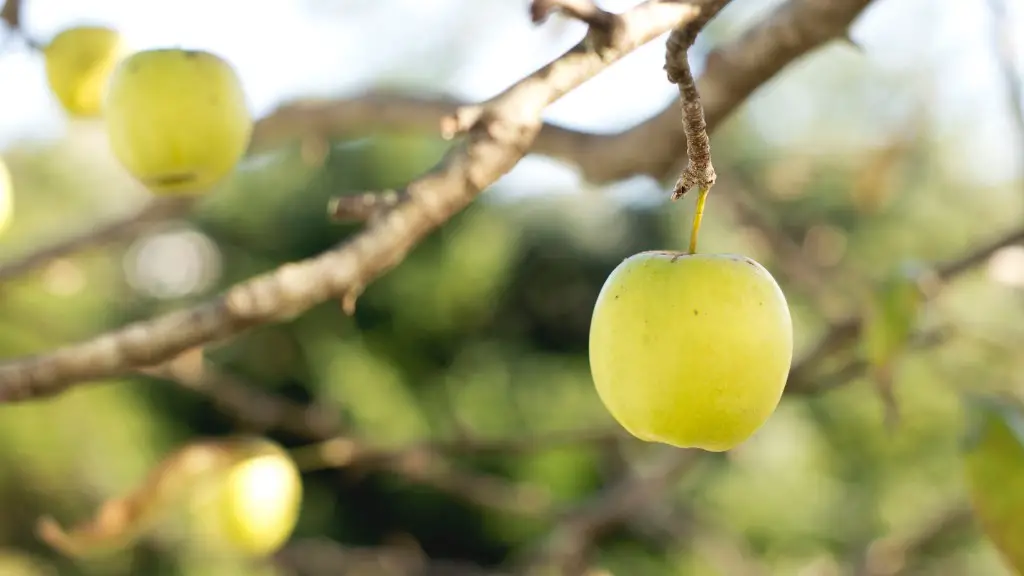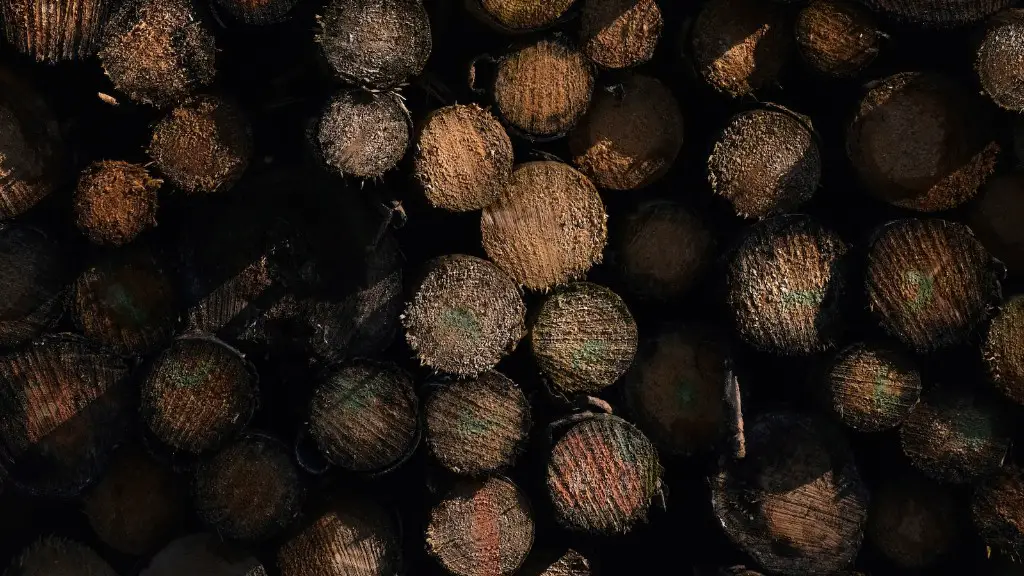Apple trees require support from the soil to stay healthy and productive. Supporting an apple tree properly is an essential part of fruit tree care. Here’s how to support an apple tree so it will thrive for years to come.
Pruning and Training Apple Trees
Pruning and training a young apple tree is the first step in providing the essential support it needs. Pruning the central leader and laying down branches helps give the tree its shape and helps provide good air circulation and sunlight, both necessary for healthy apples. Proper training should be done as soon as possible after planting and also every year during fruiting.
Staking Apple Trees
Once the young apple tree has achieved its desired shape, it’s essential to anchor it to a stake to help the tree deal with wind and heavy fruits. The stake should be secured firmly in the ground and the tree trunk should be wrapped and tied to the stake. Don’t allow the bark to be damaged from this wrapping.
Mulching Apple Trees
Mulching is an important part of providing support for an apple tree. Mulching helps retain moisture in the soil, keeps the roots cool, reduces weeds and fertilizes. Generally, 2 to 3 inches of woodchips, straw, grass clippings or other material should be spread within 4 feet of the trunk. Be sure to keep the mulch away from the trunk of the tree.
Watering Apple Trees
Watering is the key to keeping the apple tree properly supported. Watering should be done deeply, meaning the irrigation should be infrequent but in much larger quantity. Two to three gallons per mature tree is the recommended amount of water needed each week. If the tree was recently planted, more water is required each week to keep the tree healthy and strong.
Fertilizing Apple Trees
Fertilizing the apple tree is also key in providing it with the support it needs. Apple trees need fertilizer that has the correct balance of nitrogen, phosphorus and potassium. Proper fertilization helps the tree have healthy blooms and produces larger, delicious apples.
Pest Management and Disease Control
Pests and diseases can be devastating to apple trees, resulting in reduced yields or even death of the tree. To provide your apple tree the best protection, it’s important to keep it healthy and insect- and disease-free. Regularly monitoring the tree for signs of pests and diseases, applying the right pesticides and fungicides, and keeping the tree clean and well pruned are essential to pest and disease control.
Staking Young Trees
Young apple trees often need additional support during their first few years, as their branches may be too weak to handle the weight of apples. Staking young trees during those first years is essential to prevent them from being damaged by the weight of their fruits.
Creating a Supportive Environment
Creating an environment that is supportive of your apple tree is essential for it to thrive. Keeping the tree pruned, fertilized and watered correctly, staking young trees and providing enough air circulation and sunlight are all important considerations that will foster a healthy, productive apple tree.
Using Nutrients to Support Apple Trees
Nutrients have an enormous impact on the health of an apple tree. Providing the tree with the correct balance of macronutrients and micronutrients will go a long way in helping the tree flourish. Regular soil testing is recommended as a way to ensure the tree is getting the optimal balance of nutrients it needs.
Organic Soil Management
Organic soil management is another essential part of providing your apple tree with the support it needs. Using organic mulch, compost and other natural material can help create a healthy soil environment, which in turn will result in a healthy and productive tree.
Controlling Cane Borers and Apple Maggots
Cane borers and apple maggots can be devastating pests to apple trees and need to be controlled in order to provide the tree with the support it needs. Regular inspection for pests and applying the correct pesticide and fungicides when needed are essential for controlling these pests and keeping the apple tree healthy and productive.

